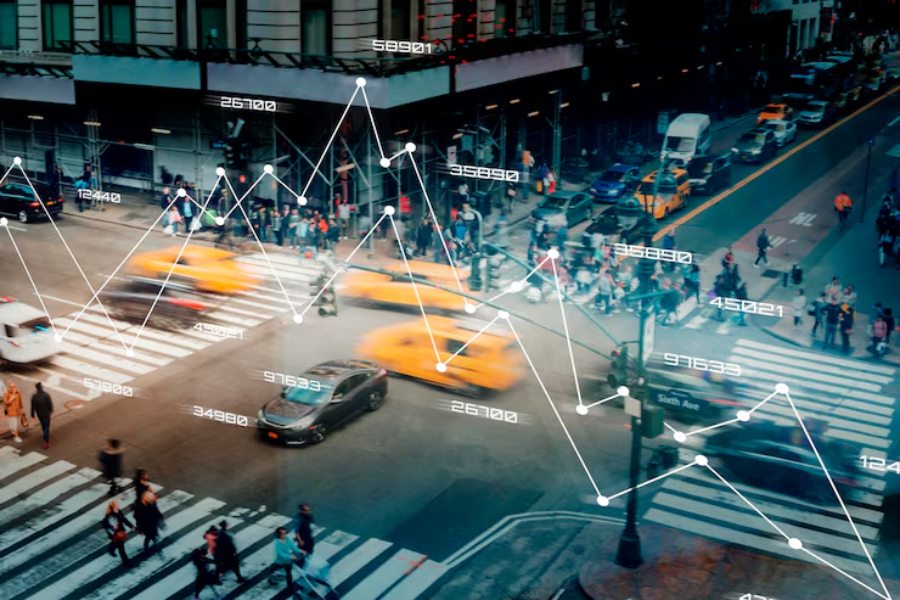Technology is reshaping the way we travel, and Michigan is right in the middle of it. From smart traffic systems to vehicles that communicate with each other, innovation is opening new doors to safer roads. Drivers, cyclists, and pedestrians all benefit when cars and infrastructure start working together.
Still, accidents remain part of life on the road. As one legal resource notes, “Accidents can happen at any time, and the moments right after are often the most important” Source: Sutliff Stout. Even with new safety tools, drivers should know what to do if something goes wrong. It’s a reminder that while technology can lower risks, human choices and legal awareness continue to shape road safety.
Michigan’s Role in Mobility Leadership
Michigan is more than the home of car manufacturing. It has become a hub for testing mobility solutions. Cities like Detroit and Ann Arbor are piloting smart intersections, autonomous shuttles, and vehicle-to-infrastructure technology. These projects aim to lower the number of accidents by improving awareness and reaction times on the road.
Connected systems can alert drivers about hazards before they even see them. For instance, a car approaching a red light could warn another vehicle before a dangerous intersection crash happens. This type of innovation blends engineering with everyday driving to help prevent serious injuries.
How Connected Cars Reduce Risks
Today’s vehicles come equipped with sensors, cameras, and software that were unthinkable a decade ago. These features make it easier for drivers to avoid mistakes. Automatic emergency braking, lane departure alerts, and blind spot detection are already preventing thousands of accidents each year.
Looking ahead, connected cars will take this further. Imagine vehicles sharing data with each other in real time. A truck in one lane can signal a sudden stop to the car behind it, or an ambulance can announce its approach through an app on your dashboard. These are not distant dreams—they are active projects being tested on Michigan roads.
Smart Infrastructure for Safer Cities
It’s not only about the vehicles. Infrastructure is becoming smarter, too. Roadside sensors, adaptive traffic lights, and digital signage give drivers better information in the moment. In Michigan, some intersections are now capable of detecting pedestrians and adjusting crossing times for safety.
Smart infrastructure also helps reduce congestion. Fewer traffic jams mean fewer chances for rear-end crashes. By blending efficiency with safety, the technology benefits both city planners and everyday commuters.
The Human Factor
Even as innovation grows, the human factor cannot be overlooked. Drivers still need to pay attention, follow the rules of the road, and avoid distractions. Technology can only assist, not replace, responsible behavior.
There’s also the matter of accountability. When crashes happen, questions arise about who is responsible. Was it driver error, a system failure, or an issue with the road itself? Having legal guidance ensures these questions are answered fairly. While tech advances help reduce accidents, drivers must still be aware of what steps to take if something goes wrong.
When Innovation Meets Legal Guidance
The mix of smarter mobility and human decision-making creates new challenges for the legal system. For example, if two self-driving cars collide, who holds responsibility? These questions are already being tested in courtrooms. Legal professionals who understand both traditional traffic laws and the new wave of mobility tech are essential.
For drivers, it means staying informed. Knowing your rights and responsibilities provides peace of mind, even in a world where vehicles are becoming more automated. Having access to guidance ensures that innovation continues to protect rather than confuse.
Everyday Tips for Safer Travel
Technology is powerful, but there are simple ways drivers can combine it with good habits:
- Use safety features already in your vehicle, such as lane assist and automatic braking
- Keep your car’s software updated to benefit from improvements
- Pay attention even when using advanced driving aids
- Stay informed about new rules related to connected or autonomous vehicles
These steps help create safer journeys today while the larger innovations continue to grow.
Looking Ahead
The future of mobility is bright, and Michigan stands at the center of it. By bringing together automakers, technology developers, and city planners, the state is proving that safety and innovation go hand in hand. Smarter vehicles and infrastructure are reducing risks in ways that benefit everyone.
Yet the road ahead is not only about machines. It’s about people. Our choices, awareness, and willingness to adapt will define how safe our streets become. Mobility innovation is a tool. How we use it, supported by strong legal guidance, will decide its true impact.

